Types Of Hellebores: Spectacular Species With Beautiful Flowers
Considering the hybrids and cultivars, there are around twenty types of hellebores
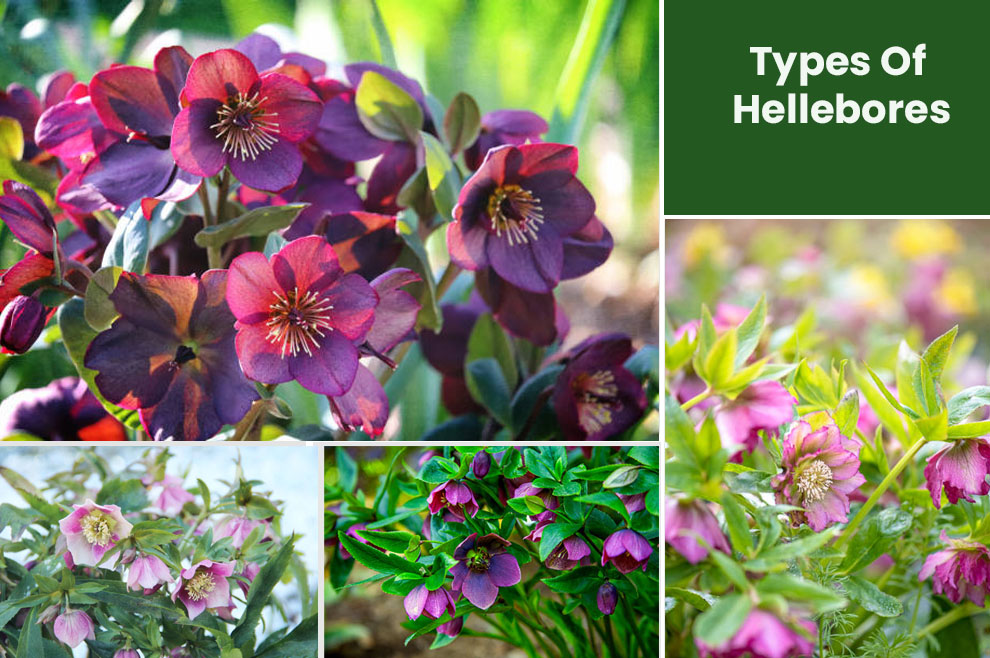
Hellebore is the common name associated with various plant species belonging to the Helleborus genus from the Ranunculaceae family. It also comprises anemone, delphinium, and monkshood. There are about twenty types of hellebores, but you can find multiple sub-species and forms too.
As variation is a staple, two different species may be distinct in flower size and color and might also show differences in the leaves’ serration and dissection. They are beautiful and widely admired for their attractive foliage and abundant blooms during the early Spring and winter.
Some of the best hellebore varieties are amongst the earliest blooming flowers that welcome Spring with their rose-like blossoms. Hence, they can be an excellent addition to every garden. They hold the ability to make the gardeners happy even during the winter.
Different Types of Hellebores At A Glance
| Botanical name | Helleborus spp. |
| Common Name | Hellebore, Lenten rose, Christmas rose |
| Family | Ranunculaceae |
| Zones | 4 to 9; evergreen in 6 to 9 |
| Size | 1–2 ft. tall with a similar spread |
| Color | White, pink, purple, yellow |
| Height | 18 to 24” tall |
| Spread | 24” wide |
| Bloom Size | 2 to 3 1/2” |
| Bloom time | February to May or Spring |
| Location requirements | Shade in summer and sun in winter, well-draining soil with neutral, alkaline pH |
| Characteristics | Deer-resistant and Low-maintenance |
| Native | Middle East |
| Toxicity | Toxic to dogs and cats |
Different Helleborus Varieties
Now, let us discuss the top 15 kinds of hellebores flowers.
1. Lenten rose
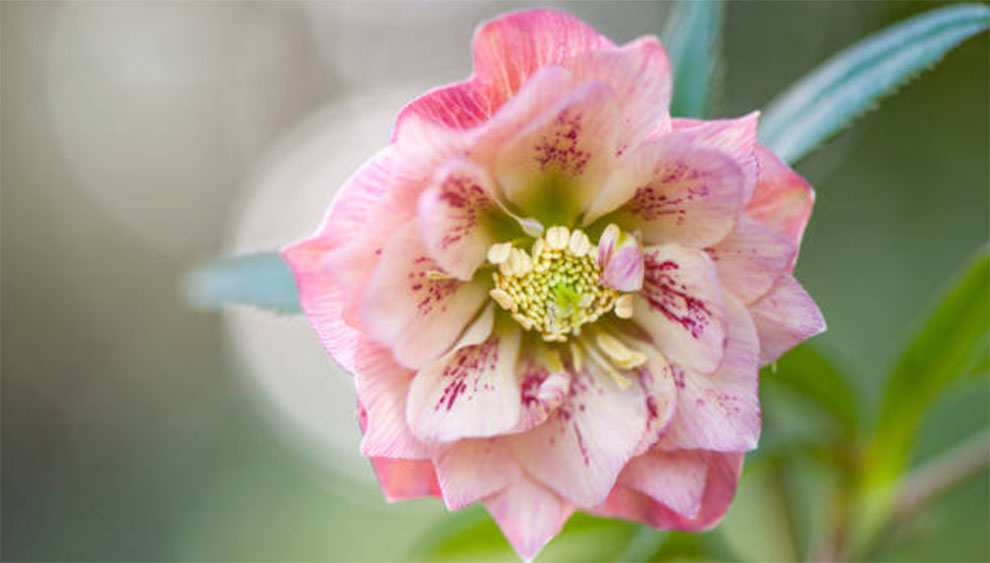
| Scientific name | Helleborus Orientalis |
| Hardiness Zone | Five through Nine |
| Color | Faded plum, creamy white, soft pink flowers |
| Season | Winter, early Spring |
It is called the Lenten rose because it appears during Lent, a period of religious observance as per the Christian Calendar. Native to Turkey and Greece, these flowers thrive in dry climates with partial sun and shade.
It is one of the most graceful and pompous plants, with more than fifty flowers blooming per plant. These Helleborus varieties bloom last about two months and can be found in various sizes, colors, and forms with multiple leaf shapes.
These Hellebores have faded plum to creamy white or soft pink flowers. Alternatively, some varieties have white flowers with rosy pink or magenta-flecked roses.
2. Christmas rose
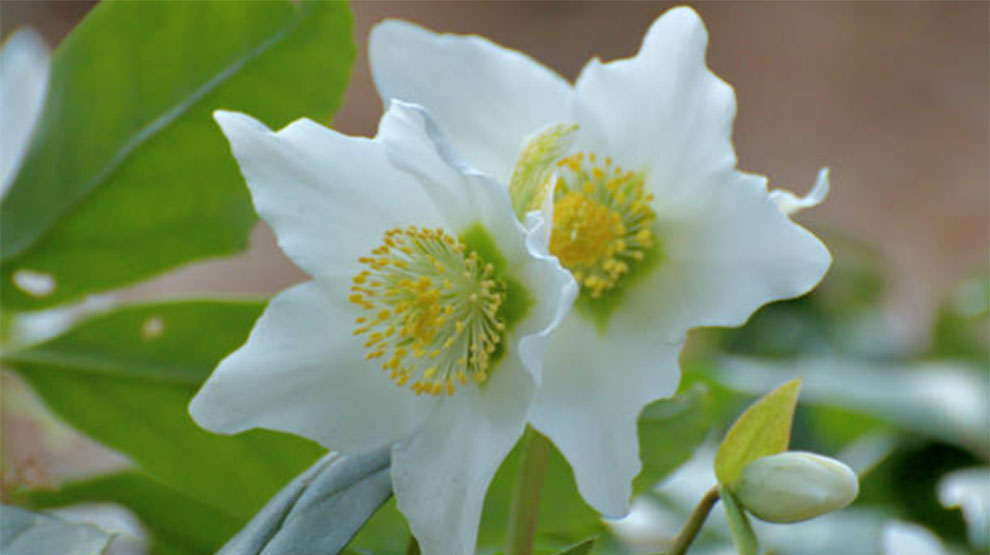
| Scientific name | Helleborus Niger |
| Hardiness Zone | Three through Seven |
| Color | White Blooms |
| Season | Late winter to early Spring |
It is one of the best hellebore varieties with white flowers that are about three inches. It is a winter-blooming evergreen variety, and its flowers are typically bowl-shaped and large. This variety also has sepals, which fade slowly to rosy green or pink as they mature. You can find its beautiful blooms growing on short and thick stems.
The tree opens up during the Christmas season, provided you cultivate and plant these types of hellebores in warm regions during the winter. But, if you grow them in cooler winter regions, it blooms in early Spring. These evergreen plants grow between nine and twelve inches upon maturity and thrive in USDA zones three through seven.
3. Black diamond
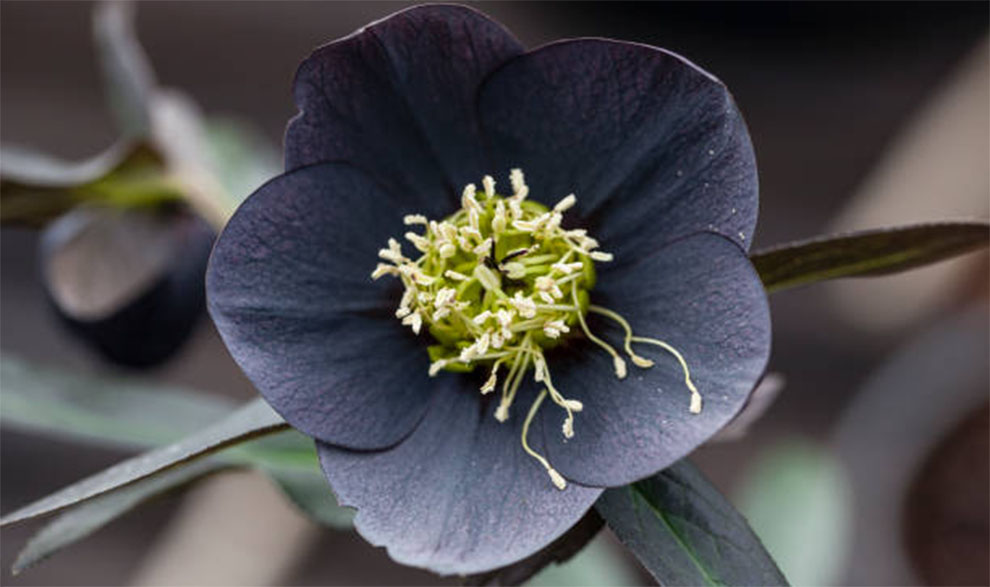
| Scientific name | Helleborus’ Black Diamond’ |
| Hardiness Zone | Four through Nine |
| Color | Purple to near black |
| Season | January to April/ From late winter to Spring |
These Helleborus species are a part of the Winter Jewels series and display ink-hue nodding flowers, evergreen leaves, and bright yellow stamens, making them a true show-stopper. You can pair it with snowdrops or white flowers, depicting a striking contrast.
Black Diamond Helleborus varieties grow about eighteen inches tall and produce purple to almost black blossoms. They are ideal for naturalizing in woodland areas, courtesy of their resistance to rabbits and deer. They can grow in filtered sun, partial shade, partial sun, or full shade with lightly moist soil.
4. Helleborus ‘Anna’s Red.’
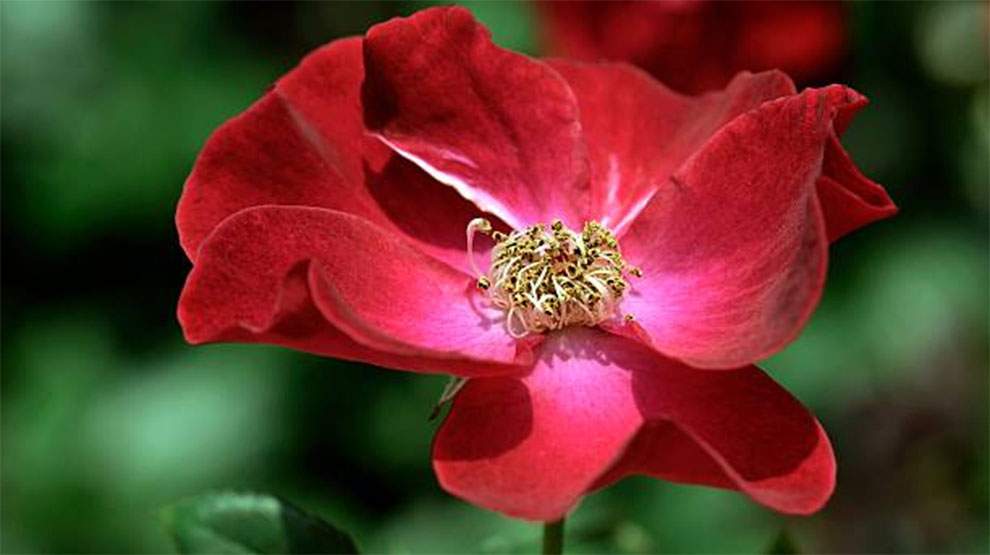
| Scientific name | Helleborus x iburgensis ‘Anna’s Red’ |
| Hardiness Zone | 5a to 8b, at least |
| Color | Red |
| Season | Winter |
It is one of the most sought-after types of hellebores in the world today. Named after author Anna Pavord and UK plantswoman, it is sterile hellebore acquired from a hybrid crossing between Helleborus x hybridus, Helleborus niger, and Helleborus lividus together, a task that was formerly considered impossible.
These Helleborus varieties develop 15″ tall x 2′ wide clumps with glossy, dark green, evergreen foliage. Its new growth comes patterned in silver, and the reddish-purple flowers sit on top of the tall stalks in the late winter, looking stunning.
5. Corsican Hellebore
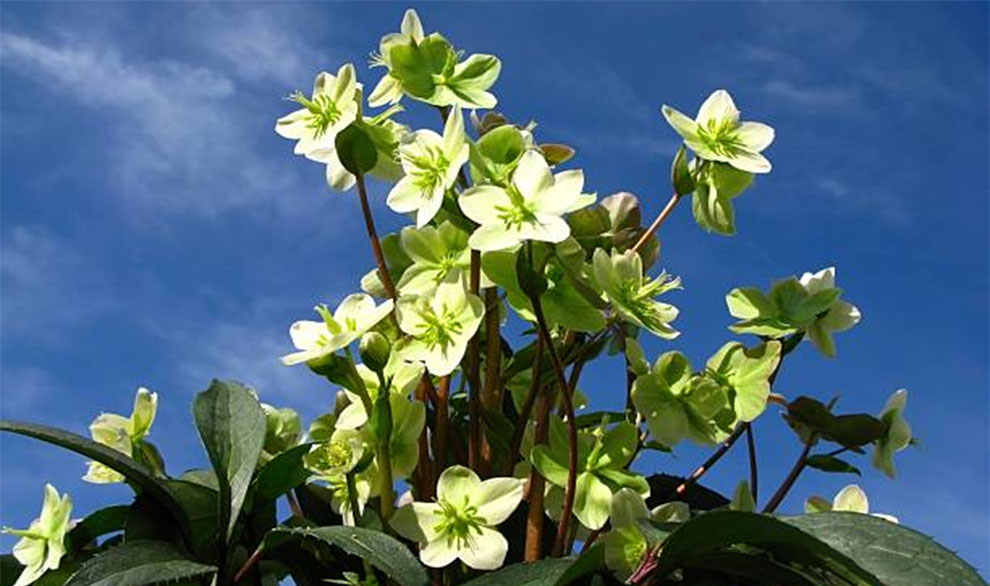
| Scientific name | Helleborus argutifolius |
| Hardiness Zone | 6A through 10 b |
| Color | Light green |
| Season | Winter and Summer – January to MAtch |
Prevalent on Corsica, an island in France, the Corsican Hellebore is one of the top hellebore cultivars, which blooms between winter and summer. The plant yields light green flowers that are prevalent in this specie. They grow about two and a half feet tall, and beyond their color and size characteristics, these varieties thrive in partial shade.
In terms of hellebore care, these types of hellebores demand moist properties and well-drained soil. Once the plant establishes, it becomes drought resistant. This bold, evergreen plant has woody, upright stems with clusters of flowers, packing around thirty flowers about three-five cm wide.
6. Stinking Hellebore
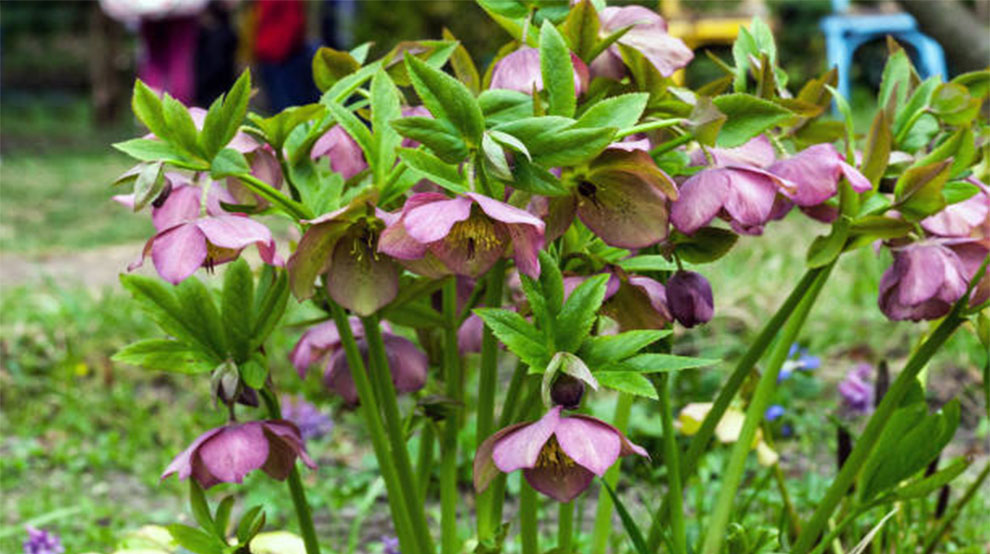
| Scientific name | Helleborus foetidus |
| Hardiness Zone | 5A through 9 B |
| Color | Green |
| Season | January to May |
It has evergreen, dark, narrow foliage and is called Stinking Hellebore because the foliage of these Helleborus varieties gives off an unpleasant scent when crushed. Its buds show in early winter and open slowly over the following three months. It is prevalent during the early weeks of Spring.
However, if you plan on growing this specie in your garden, you must remember that they need good sunlight. At the very least, these types of hellebores demand partial shade for thriving. They become at least twenty-four inches tall and are famous for their dramatic foliage. Its finely-cut leaves are arranged into a fan shape.
7. Ivory prince
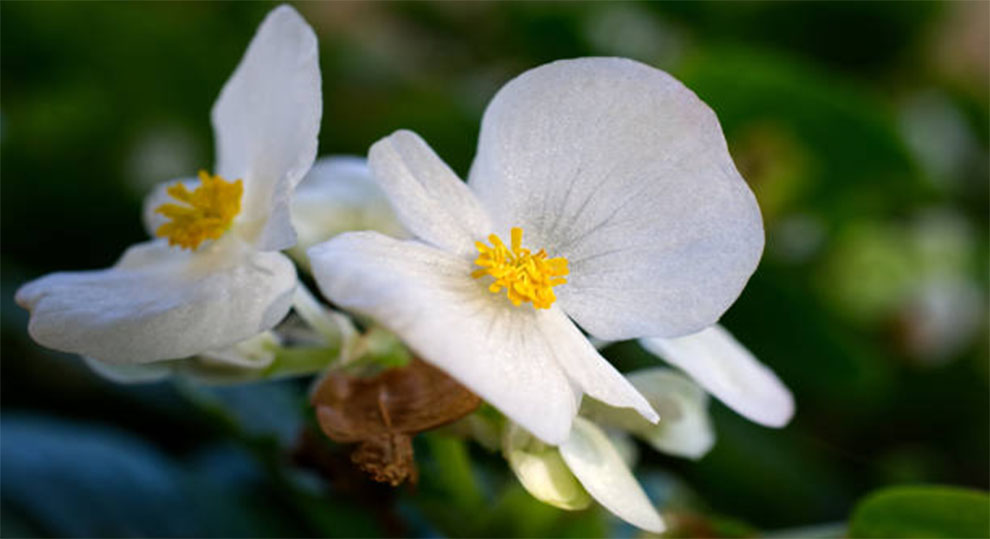
| Scientific name | Helleborus’ Ivory Prince’ |
| Hardiness Zone | Three through Eight |
| Color | Creamy-white flowers |
| Season | Early Spring and winter |
These compact, upward-facing Helleborus species have deep pink buds that open to single white blooms having chartreuse and rose hints. The plant thrives in partial sun to shade, and its season of interest is between early Spring and winter.
They share their ancestry with Christmas Rose hellebores. Also known as Walhelivor, Helleborus Ivory Prince is one of the best hellebore varieties. This variety was bred to achieve an erect, hardier specie that grows more densely than its parent plants. Its flowers are about two to three inches wide and grow in clusters, offering an eye-catching display to the onlookers.
8. Onyx Odyssey
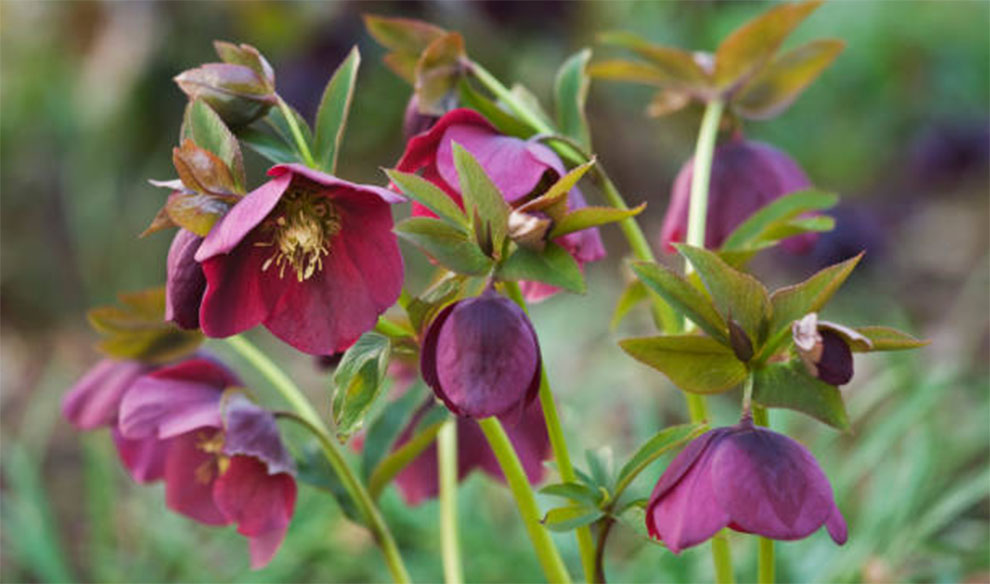
| Scientific name | Helleborus’ Onyx Odyssey’ |
| Hardiness Zone | 5a to zone 8b |
| Color | Purple-black double flowers |
| Season | Late Winter to Early Spring |
Onyx Odyssey is a long-lasting addition to any landscape that produces beautiful spring-blooming bulbs and perennials. So, if you like the deep-hued blooms with purple-black double flowers, Even though this Helleborus species is fondly called the Black plant, if you check the more exotic varieties, you will see blooms with a dark shade of purple.
Its flower has a vast spread and is carried by its glossy, green stalks. Often these flowers tend to be poisonous. So, you would want to be cautious when caring for and growing them. This plant hybrid is native to Southern and Central Europe and Asia and is prevalent as an indoor plant. However, you can also produce these hellebore cultivars as outdoor plants in flower beds and gardens.
9. Golden Lotus
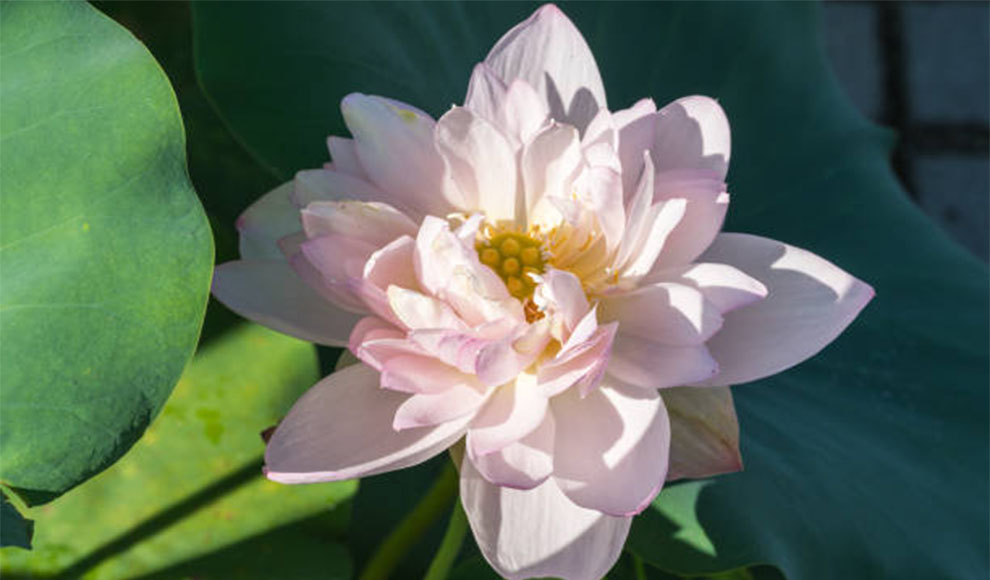
| Scientific name | Helleborus ‘Golden Lotus’ |
| Hardiness Zone | Five Through Eight |
| Color | Golden yellow petals with pink or burgundy red edges |
| Season | Late winter to early Spring |
Golden Lotus is a part of the Winter Jewels collection, comprising single and double varieties. This plant has double lemon, fluffy yellow petals, edged or streaked with burgundy, and you can grow these Helleborus varieties with Onyx Odyssey to achieve a striking look. Its stunning flower color is rare, and its unusual color-changing double flowers make it stand out in every landscape.
10. Helleborus pink frost
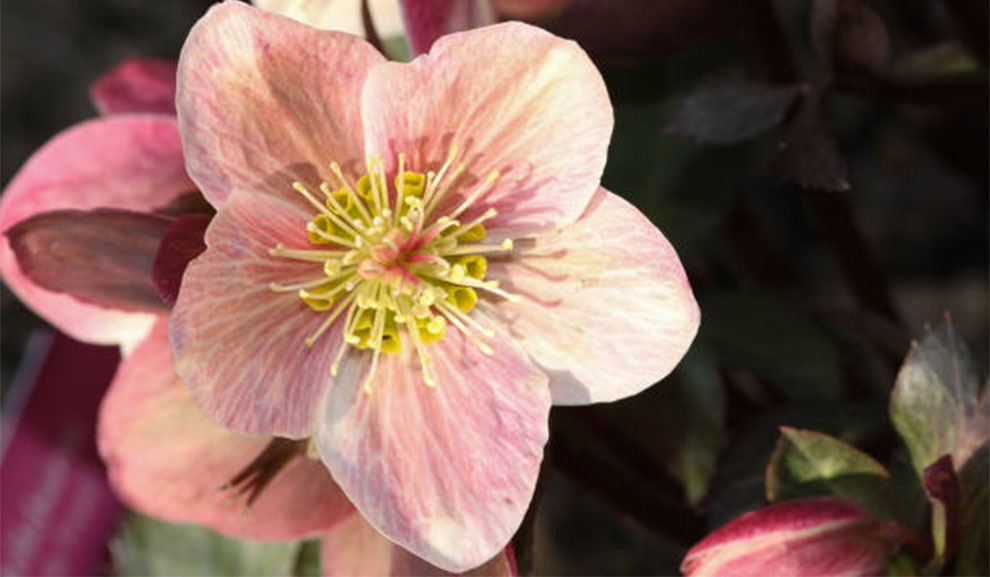
| Scientific name | Helleborus x ballardiae ‘HGC Pink Frost’ |
| Hardiness Zone | Five through Eight |
| Color | Pink with shades of yellow |
| Season | Spring to Winter |
As the fine watercolor’s muted tones, the petals of the pink flower show in several shades of pale to rosy pink. It is an upward-facing, early, and long-blooming flower that grows above the foliage, giving an excellent view for the onlookers. The petals of these best hellebore varieties mature to develop a deeper rose.
Its foliage is silvery green, and it has red, alluring stems. You can pluck its flowers and float them in a clear bowl to get yourself a centerpiece on a budget. They bloom in the Spring, and the blooming season for these hellebore cultivars lasts about six weeks. These, too, are flowering during the Lent season. They grow between 12 to 15 inches.
11. Helleborus merlin
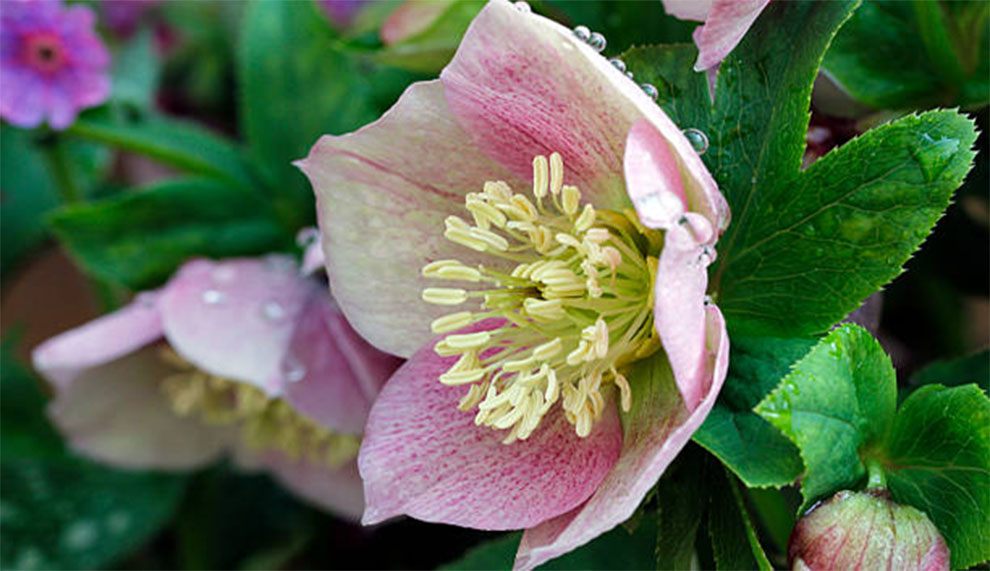
| Scientific name | Helleborus × ballardiae HGC Merlin |
| Hardiness Zone | Five through Nine |
| Color | Deep or light pink |
| Season | Early to Late Spring |
A part of the evergreen, perennial, Gold Collection Helleborus species, the Helleborus merlin is an evergreen, 45 cm tall plant with dark green, leathery, marbled foliage divided into eight leaflets. It has saucer-shaped flowers open to pale pink and cream flowers that are dark with age.
The blooms show in Spring with its outward-facing losing clusters, and these Helleborus varieties are sturdy hybrids, beautiful in flowers and leaves. These plants hate pruning. So, avoid it unless to remove dead stems or flowers near the plant’s base.
12. Helleborus x hybridus
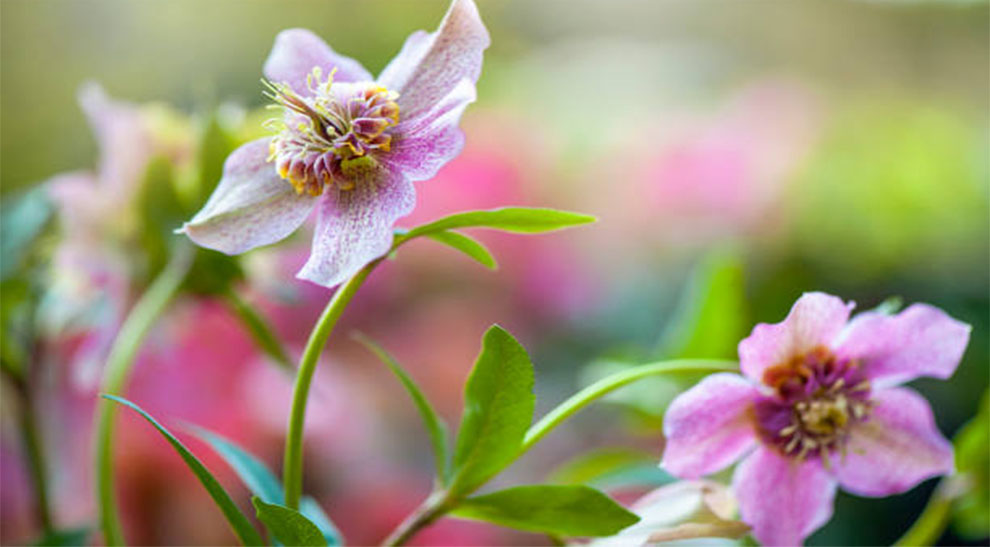
| Scientific name | Helleborus x hybridus |
| Hardiness Zone | Four through Nine |
| Color | Purplish-red |
| Season | Spring through Winter |
Also known as Oriental Hybrid, the Helleborus x hybridus is one of the most popular hellebore cultivars among gardeners because it is effortless to grow. One distinctive feature of this variety is that it has rich purplish-red flowers. Its leaves have a pink vein. These live long and are hardy. Its dark green, bold foliage veils the flowers. These flowers thrive in USDA zones four through nine.
Beyond this, there are several other different types of hellebores too. These include:
- Cherry Blossom
- Double White Spotted
- Cinnamon Snow
- Cotton Candy
- Mahogany Snow
- Ice and Roses
- Walberton’s Rosemary
- Peppermint Ice
- Confetti Cake
- Berry Swirl
- Super Yellow Spotted
- First Dance
- Double Ellen Picotee
- Flower Girl
- Single White Blotched
- Midnight Ruffles
- Single Slaty Blue
- Maid of Honor
- Blushing Bridesmaid
- Vegas Nights
- French Kiss
- Ruse Black
- New York Night
- Windcliff Double
Related Reads: When to cut back hellebores? | How to prune hellebores?
Mathew’s Six Sections of Classification
Brian Mathew, a British botanist classified the Helleborus species into six categories. Broadly, there are twenty Helleborus types, and each fits into Mathew’s six sections of classifications. Let us examine this scientific classification in brief.
1. Syncarpus– There is a single species in this category, vesicarius. It is a rare plant and is challenging to grow. They have large seed pods or conjoined carpels.
2. Griphopus- These plants have divided, narrow leaves that look like mythical griffin feet.
3. Chenopus – It comprises plants with leaves having three segments, like the foot of a Goose. It includes two species, H. lividus, and H. argutifolius.
4. Helleborus – Often called the black hellebore, it is a somewhat a confusing classification where the types of hellebores included do not have black petals but have dark roots.
5. Helleborastrum– It comprises the species crossed frequently to yield hybrids and are labeled Helleborus x hybridus.
6. Dicarpon– It comprises species with two joined seed-containing carpels.
Frequently Asked Questions
Ques 1. Which is the longest blooming hellebore?
Ans. Lenten rose is the longest blooming hellebore.
Ques 2. What is the largest Helleborus?
Ans. Corsican hellebore (Helleborus argutifolius) is the largest of the genus.
Ques 3. Which hellebores have upright flowers?
Ans. Caulescent hellebores have upright flowers. It includes Helleborus lividus, Helleborus argutifolius, and Helleborus foetidus.
Summing Up…
So, these are the different types of hellebores. Of course, it is an inclusive list, and you can find various other cultivators and hybrids which keep developing.
